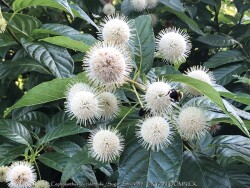
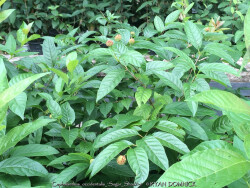
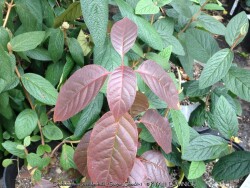
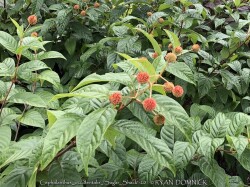
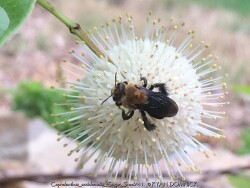

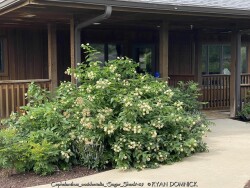
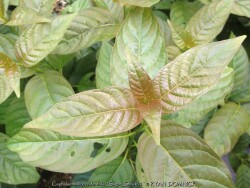
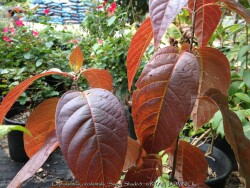

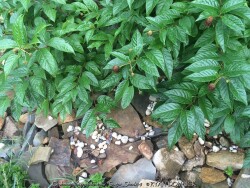
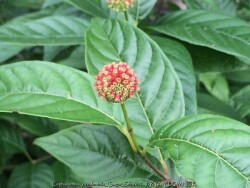
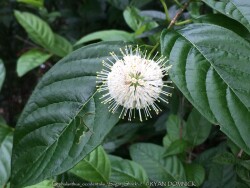
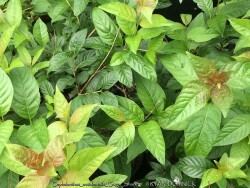
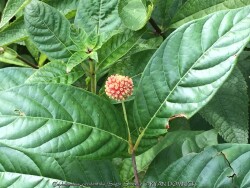
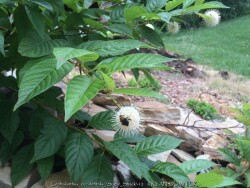

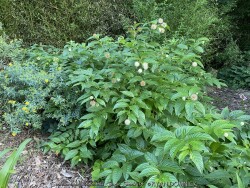
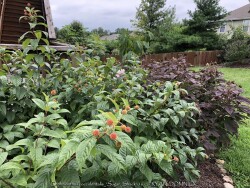
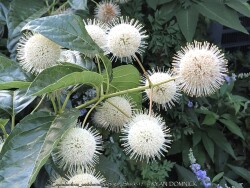


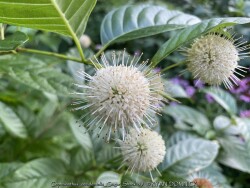
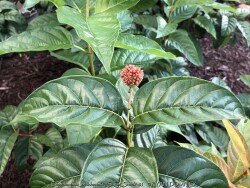
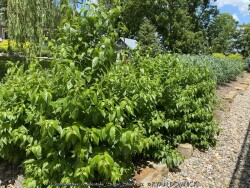
Plant Min Zone: 5a
Plant Max Zone: 9b
Sunlight: All Day Full Sun, Full Sun, Part Sun
Water / Rainfall: Average, High
Soil Quality: Average, Rich
Bloom Season: Early Summer, Summer
Flower Color: White
Berry / Fruit Color: Red
Spring Foliage Color: Green
Summer Foliage Color: Green
Fall Foliage Color: Reddish Purple
Evergreen Foliage: No
Winter Interest: Yes
Scented Flowers: No
Drought Tolerance: Medium
Wet-Feet Tolerance: High
Humidity Tolerance: High
Wind Tolerance: Medium
Poor Soil Tolerance: Clay Soils, Rocky Soils, Sandy Soils
Height: 4' - 6'
Width: 4' - 6'
Growth Rate: Medium
Service Life: Very Long: 10-20 years
Maintenance Need: Low
Spreading Potential: Low
Yearly Trimming Tips: Trim Shrub to Desired Size in Late Winter or Early Spring Before New Growth: Blooms on New Wood.
Plant Grouping Size: Specimen Planting of 1-3, Small Grouping of 3-5
Best Side of House: South Exposure, West Exposure, East Exposure, North Exposure
Extreme Planting Locations: Tolerates Periods of Standing Water, Base of Retaining Wall Locations, Resistant to Rabbits
Ornamental Features: Multiple Seasons of Interest, Long Blooming Season, Exceptional / Colorful Foliage
Special Landscape Uses: Hedge Row, Erosion Control
Possible Pest Problems: None
Plant Limitations: Needs Regular Irrigation, May be Poisonous
Shippable in 2026: YES
Button bush (Cephalanthus occidentalis) is a beautiful rounded shrub with glossy green leaves that turn reddish maroon in fall. White flowers are very unique (and look like a coronavirus) consisting of small spheres with protruding anthers. Bloom occurs all summer and are attractive to many different bee and butterfly species, including the swallowtail butterfly. Red fruiting heads appear in late summer adding to the ornamental appeal! In its native habitat covering most of Eastern United States including disjunct populations in Arizona, California, and Mexico, this wetland shrub can be found in low-lying areas. This includes swamps, marshes, bogs, wetlands, and along the edges of ponds, streams, and rivers. In Eastern Kansas, this is a no-brainer shrub to small tree for average garden soils including heavy clay and useful for rain gardens. Adapts to a wide range of soils except dry ones if in poor soils. Tolerant of moderate drought once established especially if in moisture-retentive rich soils. As a testament to this plants survivability, Clinton Lake and Perry Lake located in NE kansas flooded in 2020 with areas of shore-line underwater for the entire growing season. This killed every other plant species was killed except for buttonbush: all top growth was killed but new shoots from the root systems of thousands of plants along the shore resumed the following year when water receded. Basically, these plants survived over 18 months with no growth from fall of 2019 to spring of 2021. This plant can also grow in permanent standing water or as a potted plant in water gardens. Sugar Shack® Buttonbush (Cephalanthus occidentalis 'Sugar Shack') in a new Proven Winners variety! Although buttonbush has long been prized as a native and great for rain gardens, it was way too big for most landscapes. Not anymore! They cut the size in half and added improved colorful red fruit and glossy foliage. Add in cool looking, fragrant white flowers and you've got a delightful plant that shines from spring to fall. Blooming on new wood, button bush may be trimmed in early spring. Complete rejuvenation may also be done if plants get too big.